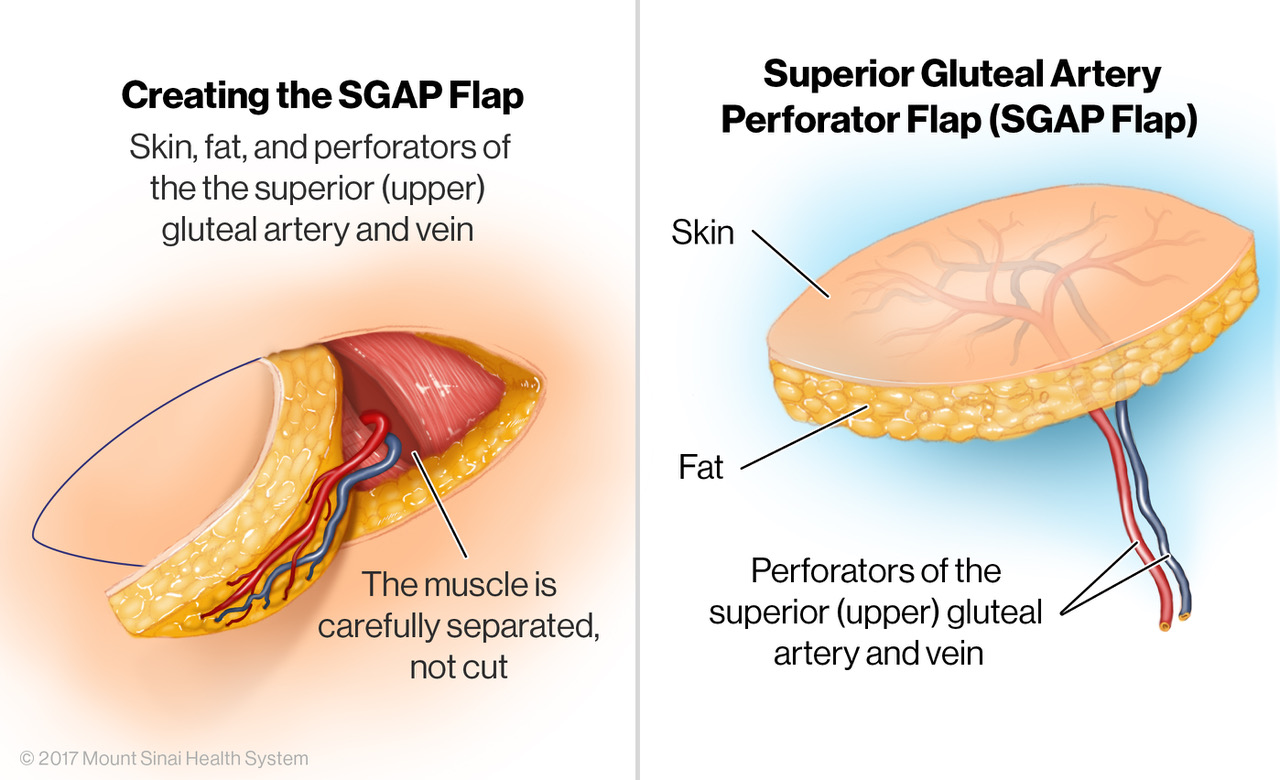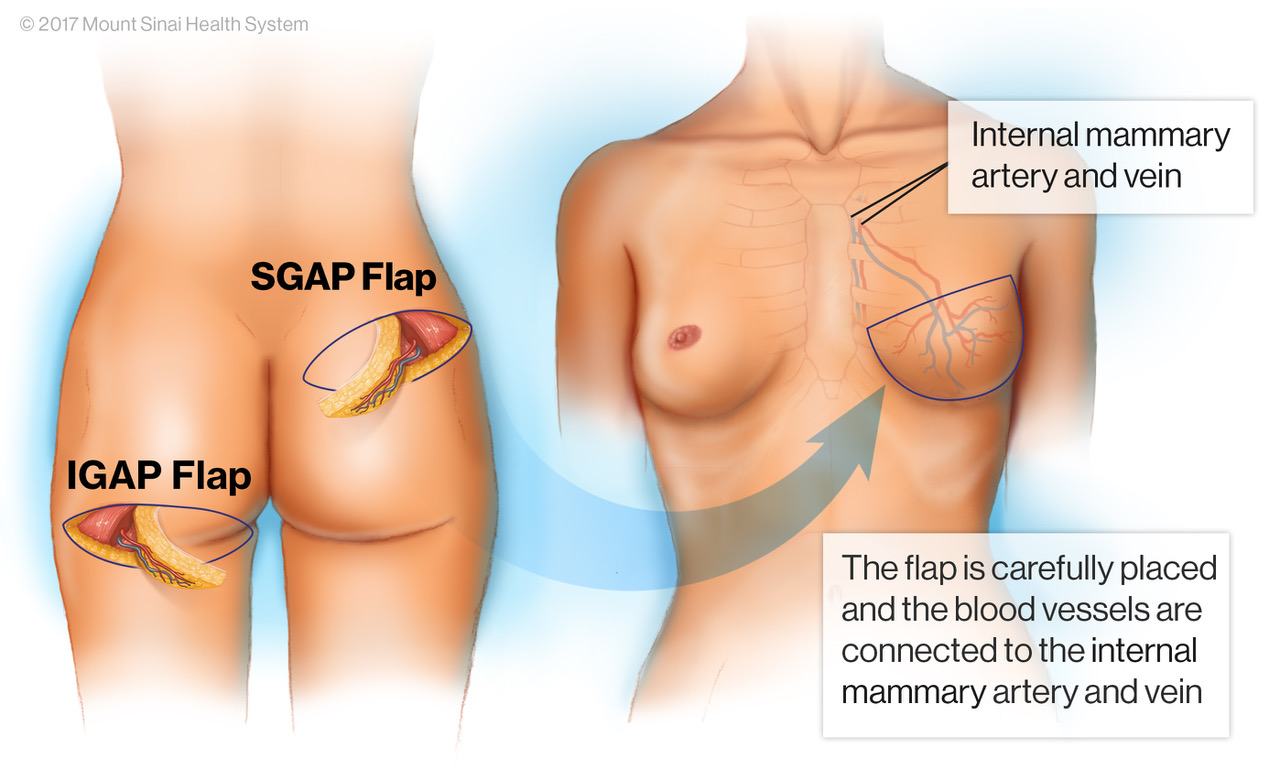Breast Reconstruction
IGAP & SGAP Flap Breast Reconstruction Procedure
This page presents details on IGAP and SGAP flap breast reconstruction, surgical techniques utilizing tissue from the buttock region. In IGAP flap surgery, tissue is harvested from the upper portion of the buttock, while in SGAP flap surgery, tissue is obtained from the upper outer buttock. Explore comprehensive medical illustrations and video narration to gain a clear understanding of these procedure
About IGAP & SGAP Flap Breast Reconstruction
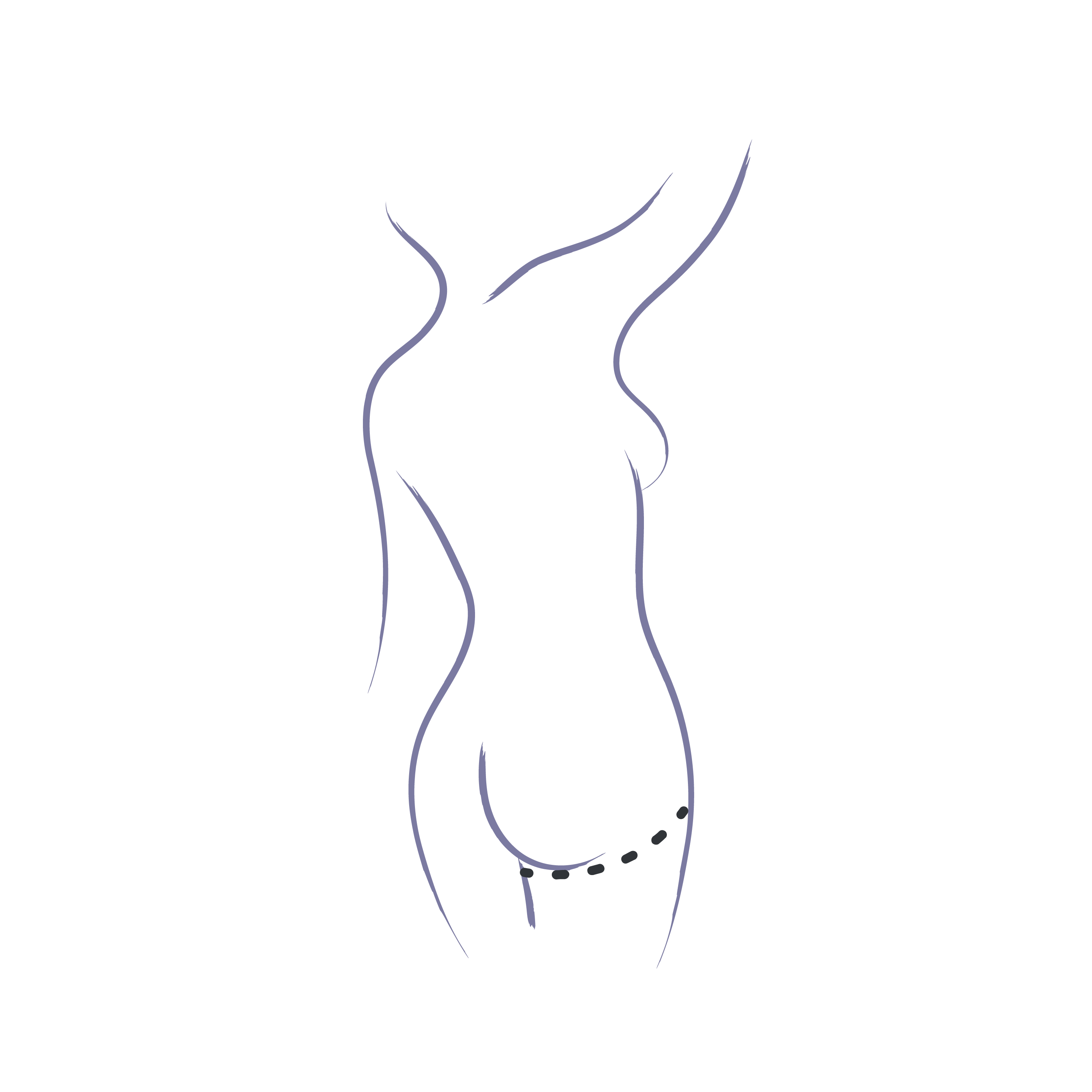
IGAP Donor Site: Lower Buttock
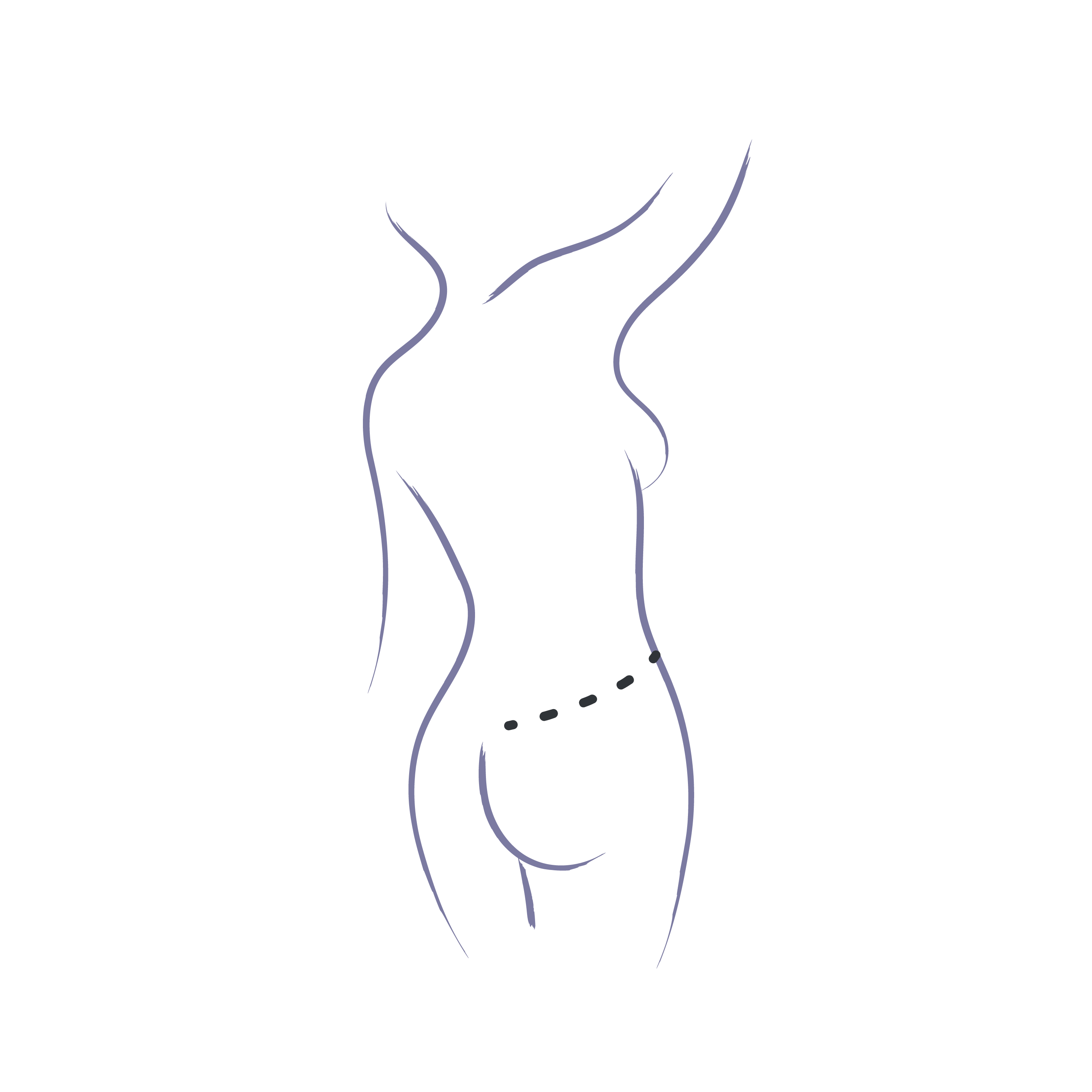
SGAP Donor Site: Upper Buttock
IGAP Flap:
The IGAP Flap Breast Reconstruction (stacked hemi abdominal extended perforator) flap is an excellent option for thin women who need more volume than there is in the center of their abdomen.
The ability to extend the traditional abdominal flap out farther depends upon obtaining extra and adequate blood supply for that area. In this operation much like the stacked DIEP, a second blood vessel is harvested to supply the extra fat in the extended area of the abdominal flap. This area comes around towards the back of the patient and incorporates upper hip fat.
With this operation, patients who have been told that they’re too thin for the DIEP operation are now candidates for using their abdomen. No muscle is ever sacrificed in this operation.
SGAP Flap:
SGAP breast reconstruction uses available fat in the upper buttock area and tends to reduce the size of the upper buttock. For women who are thin, cannot, or do not wish, to use their abdomen or thigh as the source tissue (donor site) for breast reconstruction, the superior gluteal artery perforator, or SGAP, flap may be an excellent choice. The main advantage of this procedure is related to the scar in that it can be easily hidden in a bikini bathing suit or underwear. Together with Dr. Levine, you can determine the your best option in perforator flap breast reconstruction based on your body type and other factors, including your personal preference.
Like the DIEP, PAP and IGAP flaps, this perforator flap also does not sacrifice any muscle. The underlying gluteus maximus buttock muscle is entirely preserved with this operation.
Common Questions about the IGAP / SGAP
Flap Breast Reconstruction Procedure
Both IGAP and SGAP flap techniques use tissue from the buttock area for breast reconstruction. Here are some considerations for candidacy:
- Tissue suitability: A woman should have an adequate amount of excess tissue in the buttock area to serve as donor tissue for the flap reconstruction. Dr. Levine will assess the buttock area during a consultation to determine if there is sufficient tissue available for the procedure.
- Body shape and overall health: The patient’s overall health and body shape are important considerations. Dr. Levine will evaluate the patient’s medical history, current health status, and body mass index (BMI) to ensure that they are in good general health and suitable for the surgical procedure.
- Vascular anatomy: The presence of suitable blood vessels in the buttock area is crucial for a successful IGAP or SGAP flap reconstruction. Dr. Levine will assess the patient’s vascular anatomy, particularly the gluteal artery perforators (either inferior or superior), which provide blood supply to the skin and fat tissue in the buttock. The presence of adequate perforators is necessary to support the transferred tissue.
Donor site and incision placement: IGAP and SGAP flaps differ in the specific areas of the buttock that are utilized as donor sites. IGAP flaps typically utilize tissue from the lower buttock area, while SGAP flaps use tissue from the upper buttock area. The incisions are made in the buttock crease or other discreet locations to minimize visible scarring.
Gradually, blood vessels and nerves grow into the transferred tissue. Scars fade, and the end result is a breast reconstruction that looks and feels and behaves exactly like a normal breast. The only difference is that there is no breast tissue inside it, and therefore no risk of breast cancer in the transferred tissue.
The photographs in this section are of actual patients of Dr. Joshua Levine. They have undergone various types of autologous breast reconstruction (perforator free flaps), i.e. DIEP/SIEA, PAP, GAP, delayed, immediate, with nipple-sparing mastectomy, etc. Keep in mind that each patient is unique and results may vary. To view more before & after photos, please contact our office to schedule a consultation.
Natural tissue breast reconstruction has several benefits compared to other methods of breast reconstruction. Here are a few key benefits:
-
- It uses a woman’s own natural tissue, which means that it is less likely to be rejected by the body.
-
- It doesn’t require the use of implants, which can cause complications such as scarring, infection, and hardening of the breast tissue.
-
- It doesn’t sacrifice any muscle, which means that women can retain their natural shape and function.
-
- It can be performed at the same time as a mastectomy, which can save time and reduce the overall number of surgeries that a woman needs to undergo.
-
- It can help women feel more comfortable and confident in their own bodies, which can improve their quality of life.
Overall, natural tissue breast reconstruction can provide women with a more natural and safe option for restoring their breasts after a mastectomy.
“Dr. Levine is an outstanding Doctor. He is a wonderful human being and a highly skilled surgeon. My results are nothing short of miraculous. There is no one like Doctor Levine. He is an artist and a true professional.”
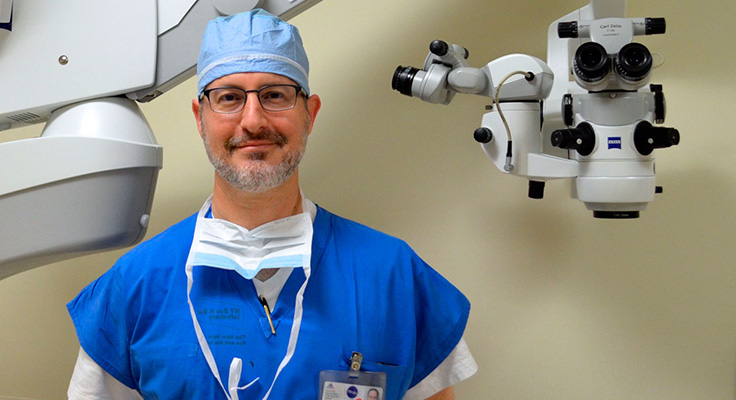
Dr. Joshua L. Levine, MD, FACS
World Leading Authority in Perforator Flap Breast Reconstruction
Based in New York, New Jersey, and Connecticut
Meet Dr. Joshua L. Levine,
World-Renowned in the Art and Science of Natural Tissue Breast Reconstruction
Dr. Joshua Levine is a world-renowned perforator flap breast reconstruction surgeon. Meaning, all of his breast reconstruction procedures, are muscle-sparing, using only your own natural tissue to restore your breast(s).
With his advanced techniques, such as stacked combination flaps, or utilizing the delay phenomenon in staged-immediate reconstruction, all women, no matter how thin and no matter what body type, are candidates for natural tissue, muscle-sparing, implant-free breast reconstruction.
As Seen On: US News & World Report, diepflap.com


